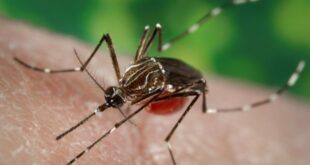Jekyll and Simon have followed a surprisingly similar migratory route, challenging scientists’ assumptions.

Jekyll and Simon keep showing up in all the same places — which is weird, because they are great white sharks.
The apex predators are widely believed to be solitary creatures, not dependent on family networks or group dynamics to navigate the oceans, unlike many of their marine neighbours.
“What we’ve noticed with the case of Simon and Jekyll … was an incredible, I would say, synchronicity in their movements,” shark scientist Bob� Hueter told As It Happens guest host Paul Hunter.
Hueter is the chief scientist at Ocearch, a U.S.-based marine research institute that’s currently tracking 92 great white sharks. Two of those sharks, Jekyll and Simon, were tagged off the coast of the state of Georgia in December 2022.
Over the last eight months, his team started to notice a pattern emerge with Jekyll and Simon — their trackers keep pinging in the same part of the ocean at the same time.
The unlikely duo have travelled the same migratory route from Georgia to New England to Maine and into Canada, where they have spent the summer hunting off the coasts of Quebec, New Brunswick and Nova Scotia.
By the time they reached Nova Scotia, Hueter says “it became almost like a lockstep migration of the two.”
Not side-by-side
But the scientist wants to be clear that when he says they are in the same place, he means within a few kilometres of each other.
“It is really important to emphasize we’re not talking about two animals that are swimming side-by-side,” he said.
“They probably are not, you know, able to see each other except maybe at times when they cross each other’s paths. They’re not communicating with each other in any way that we would understand. But they’re just so synchronized.”

Conservation biologist Mikki McComb-Kobza — who has previously worked with Ocearch but is not involved in this research — says she’s excited to see what scientists will learn from Simon and Jekyll.
“It’s really, really something we haven’t seen before there,” McComb-Kobza, executive director of the Ocean First Institute in Boulder, Colo., told CBC.
“What it suggests is that, you know, there may be a migratory route that these … animals, or white sharks in general, are following, and we just don’t know that because we haven’t tagged that many individuals.”
Brothers?
Jekyll and Simon are both juvenile males of approximately the same age, which leads Hueter and his colleagues to suspect they may be genetically related — maybe even brothers.
The researchers have taken tissue samples of both creatures and are currently waiting for the results of DNA tests.

“If they are, in fact, siblings and they’ve undergone these migrations, these very specific points, it revolutionizes our perspective on the genetic basis of this migratory behaviour,” he said.
It would suggest, he said, that sharks aren’t so solo after all. Potentially, they travel in family packs.
“That’s a very different perspective from … sort of a mindless, you know, big predator that’s just cruising around, following water temperatures and currents, and following the prey,” he said.
“This is more directed, it’s more genetically programmed. And for us as biologists, it’s in some ways more exciting.”
‘Canada is white shark territory’
It could also impact how scientists approach great white conservation, as it pertains to populations in specific areas.
“If you don’t protect what needs to be protected … you’re not just wiping out a sort of a sample of the population, but you’re wiping out a whole genetic component of the population,” he said. “Wiping out families, essentially.”
And conservation in Canada is key to shark survival, he says. The East Coast has seen an explosion of great whites in recent years, something many experts have credited to strong federal protections, not just for the sharks, but for the seals they feast upon.
Since Ocearch started tagging and tracking the animals, Hueter says one thing has become abundantly clear: “Canada is white shark territory in the summertime, no question about it.”

And if the sharks aren’t related?
“It could be a coincidence. There might be more to it. But I think that is what science represents — is that as we learn more, we get additional questions,” McComb-Kobza said.
“I think that’s the really exciting part of this, is that as we learn where these animals are going through these satellite tags, it allows us to understand and ask more questions.”
Scientists are just starting to scratch the surface of great white shark behaviour, she said, and they may have to throw out a lot of their previous assumptions.
“We don’t spend enough time underwater with our eyes or our cameras to know what these animals are doing,” McComb-Kobza said.
Interview with Bob Hueter produced by McKenna Hadley-Burke
*****
Credit belongs to : www.cbc.ca
 Atin Ito First Filipino Community Newspaper in Ontario
Atin Ito First Filipino Community Newspaper in Ontario






